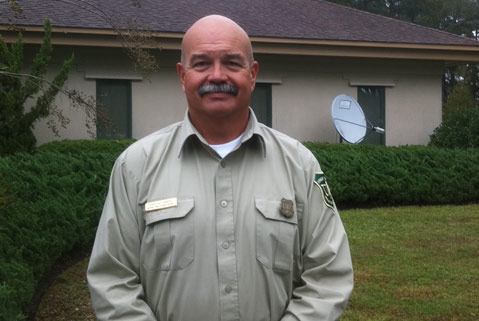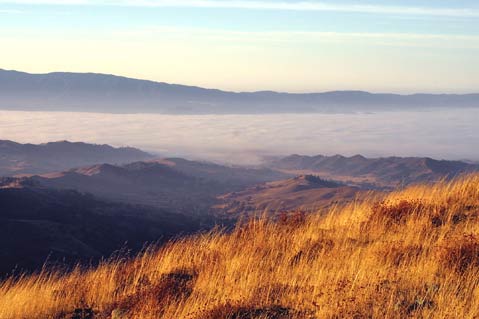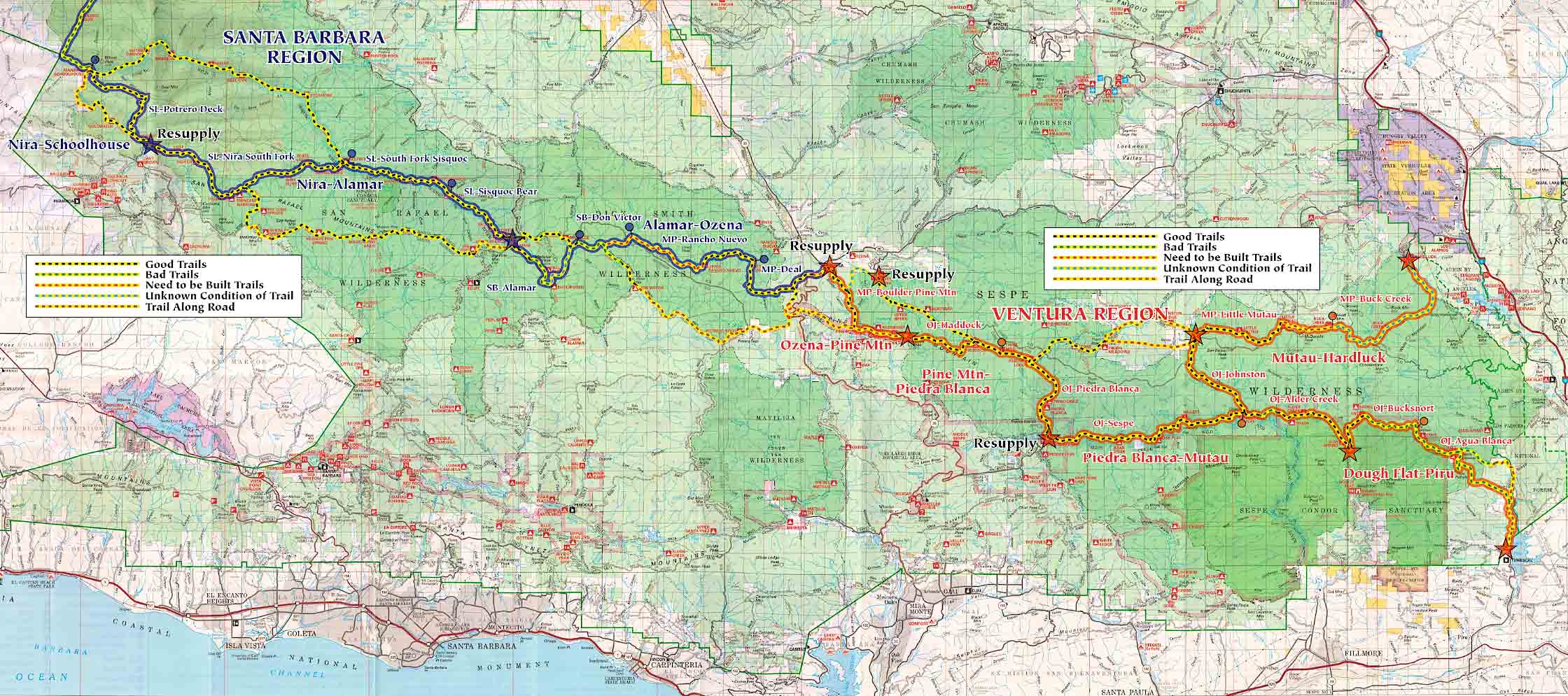Pancho Is New Head Honcho
John “Pancho” Smith Taking Over as Los Padres National Forest's Santa Barbara District Ranger

As the son of a game warden growing up amidst the wilds of New Mexico, John “Pancho” Smith got quite the early education in the breathtaking beauty of America’s public lands. He turned those early memories into a career, starting in 1971 as a seasonal firefighter for the federal government, getting a degree in range management from the University of Arizona-Tuscon, working from 1982 to 1991 as a game range manager for Arizona’s Department of Game and Fish, and then from 1996 until last year in law enforcement for the U.S. Forest Service.
At the end of July, Pancho will leave his current post as district ranger of the Croatan National Forest in North Carolina to take over as the head honcho of Santa Barbara County’s most popular public landscape: the Los Padres National Forest’s Santa Barbara Ranger District, which extends roughly from Figueroa Mountain almost all the way to Highway 33, and then through the Santa Ynez River valley and over the Santa Ynez Mountains into the South Coast’s trail-tracked frontcountry.
While his daughter is off to her first year of college at Gallaudet University in Washington, D.C., Smith will be coming to Santa Barbara with his wife, a planner and avid tennis player, and his 13-year-old son. In anticipation of his July 30 arrival, he spent a few minutes on the phone with me earlier this week from his office in North Carolina, just after getting the handle on a 21,000-acre wildfire that scorched the Croatan.
Not everyone knows what a district ranger does, so can you fill us in?
Basically, what I am is the overall manager of the unit, that being the ranger district for the U.S. Forest Service. My responsibility is many-fold.
It is all the personnel stuff that has to be done. It is the budget that we need to stay on track with. It is all the administrative issues that need to be taken care of. It’s making sure that the NEPA [National Environmental Protection Act] process is signed off on correctly. There’s archeology, there’s wildfire, there’s, in some cases, timber production and other products that come off national forest system lands. There is recreation — here [at Croatan in North Carolina] and there [the Los Padres], we have very intense recreation loads. So it’s just an overview of all those things, and also bringing them all together so that they work well together — like if we have a prescribed fire, I’m not gonna do it on the Fourth of July.
Ultimately, you’re the decision maker on many, many things that happen on the national forest system lands. But you’re not operating in a vacuum. You have trained professionals who are experts in their fields to help you.

What do you know about our forest?
I just spent awhile yesterday with one of the guys we have on the fire who spent 12 years in the Santa Barbara district. He called it “Santa Barbara-itus” — once you’ve been there, you don’t want to leave. It’s one of the most beautiful places on the face of the earth.
I know from past experience that you have a lot of wildfires, and there’s a pretty intense recreational program with a lot of trails and a lot of people, both locals and visitors, who come to the area and want to get on the national forest and recreate.
One of the things I hear is that the people there are really top notch, and very good at what they do. That’s come from both inside and outside the Forest Service.
Among other issues, illicit marijuana grows are a big problem in the Los Padres. Do you have experience with that?
I spent the past 23 years in the U.S. Forest Service in law enforcement, and so I have dealt with quite a few of the large marijuana gardens, primarily in Arizona, where we had a big rash of them, and still do. I’ve been involved in their detection, eradication, clean-up, putting people in jail, getting the plants out, getting them burned — the whole nine yards. I would expect to be a resource that is utilized because I do have some experience and some knowledge about it, and that will make it easier for me to understand.
The Forest Service budget seems to always be super-tight. Is there any hope of that changing or are we stuck in this low funding limbo forever?
I don’t know. I’m really not in a position to answer that question, to be quite honest with you.
The people of the Forest Service are very hardworking and very dedicated to what we do. We will do the best we can with the money that we have. It’s a fact of life that money is cut and sometimes services are cut, but we focus on the safety of our employees and the public, and try to tier off that. We’ll never sacrifice safety for budget.
But I’ll be the first to admit: It’s difficult at times to do the things that you feel need to be done with a limited budget. You have to triage it, and take care of the high priority items first.
There seems to be a resurgence in trail usage these days. Might that lead to more money for trails and campgrounds?
It really is determined by the budget.
One of the advantages of having more people interested in the national forest system is that we have a growing cadre of people who volunteer to come help us, who are willing to work to brush the trails, clean campsites, and do a variety of different things like that.
But we still have to work within the confines of our budget. Even though we have more people, we don’t necessarily get more of a budget to accommodate them.
Do you agree that backpacking seems to be on the rise?
Yes. There is increased use of national forest lands across the country in the places I’ve visited.
A lot of that is because we have more people than we’ve ever had before. The population is growing exponentially and people are looking for opportunities to recreate.
And if you look at it cost-wise, it’s probably less expensive to get a backpack and go into the wilderness than it is to go to the mall for the day, or to go to a water park or a theme park somewhere. Research has shown that being outdoors and fresh air exercise is much better for you psychologically and physically.

Have you heard much about the Condor Trail, an idea to connect most of the Los Padres with one long trail?
I’m dealing with one here on the Croatan, the “Mountain to Sea Trail,” which would come off the Appalachian Trail and go to the coast. It’s the same type of concept.
How’s that going out there?
In this case, the difficult part is that they are coming across a lot of private and state and county land getting here. We don’t know exactly where it’s going to hit the national forest. We sat down and said here are some possibilities and options.
The forest here is different than what you have. We’re very flat and there are limited places where people can go. There are very few places to put a trail that’s not next to a traveled dirt road or a railroad. And different communities want feeder loops off that trail. So in our case, it’s a little more difficult, but it’s just an ongoing planning process and working through the different hoops.
Have you heard much about Los Padres ForestWatch? They organize volunteer trail work and cleanup days, but are also a watchdog of the Forest Service, and sometimes sue or threaten to sue to uphold environmental laws. Have you dealt with groups like that before?
We don’t have that in North Carolina, but I had a little bit of that on the Superior National Forest in Minnesota, and on the Tonto in Arizona, and the Shawnee in Illinois. Groups like that are out there all over the United States, so I have dealt with it.
They way I look at it is that they are Americans, and they have the legal right to do the things they are doing, and they are concerned enough to do those kind of things. As far as I’m concerned, it’s a check and balance thing at times. At least, it can be.
It is sometimes a little frustrating in trying to accomplish our program of work. There is no doubt of that. But if you take the 30,000 foot view, it’s checks and balance. It helps us look at ourselves.
There’s a push to expand wilderness areas in the Los Padres. Where do you stand on that?
From a personal basis, I grew up on the edge of the Gila Wilderness in New Mexico. I think wilderness is one of the most valuable things we can have. That’s a personal opinion. It gives people the opportunity to go into the backwoods and be away from people. I also worked for five years in the Boundary Waters Canoe Area Wilderness in Minnesota, and I am just a firm believer in wilderness.
Is it more difficult to work in there? Absolutely. When it comes to fighting fire or any kind of management activities, there are a lot more things you have to deal with, as far as policy and procedure, and not being able to use motorized equipment.
I still believe wilderness is a very, very valuable thing to the American people, and I think that it is a very valuable component to the national forest system. I like wilderness. That’s why I like to hunt, that’s why I like to recreate.



